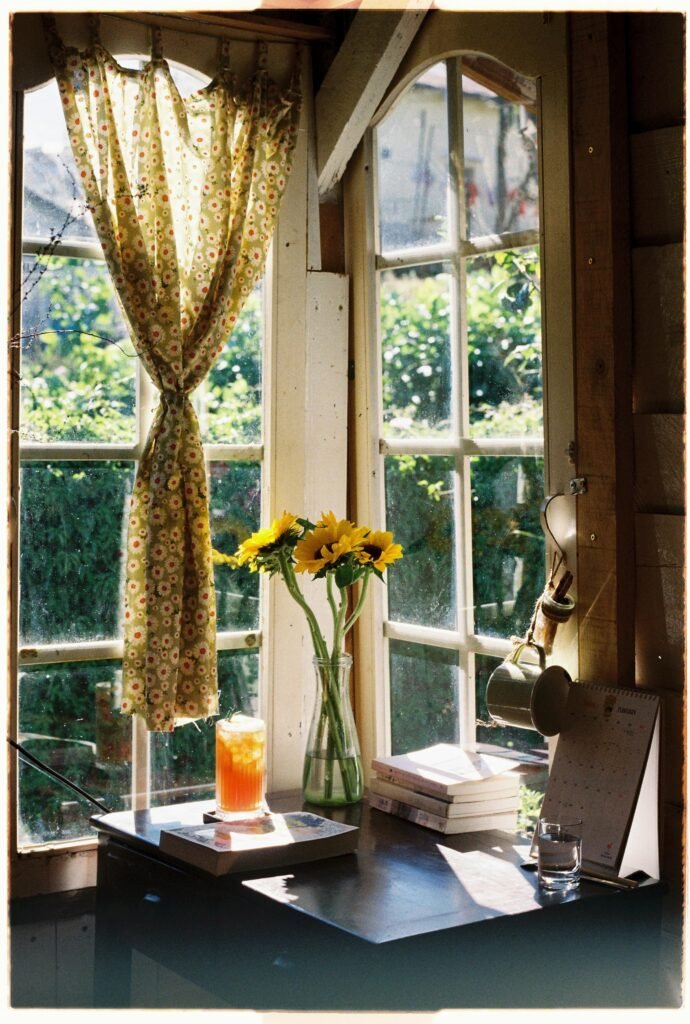In this friendly and informative article, you will find a comprehensive guide to maintaining your fireplace heater, ensuring that you can keep things toasty all winter long. From simple cleaning techniques to troubleshooting common issues, this guide will equip you with the knowledge and tips you need to keep your fireplace heater running smoothly and efficiently. Whether you’re a seasoned fireplace owner or new to the world of cozy fires, this article will provide you with all the guidance you need to maintain your fireplace heater and enjoy its warmth throughout the colder months.

This image is property of images.pexels.com.
Importance of Fireplace Heater Maintenance
As the winter season approaches, it’s time to prepare your fireplace heater for the cozy nights ahead. Proper maintenance is essential for a variety of reasons, from preventing fire hazards to improving indoor air quality. By taking the time to care for your fireplace, you can ensure optimal performance and efficiency, prolong its lifespan, and save on energy costs.
Prevention of Fire Hazards
One of the most critical reasons to prioritize fireplace heater maintenance is to prevent fire hazards. Over time, soot and debris can accumulate in the chimney and vents, increasing the risk of a dangerous chimney fire. By regularly cleaning the fireplace glass, removing ash and soot, inspecting for debris or blockages, and checking for cracks or damage, you can mitigate these risks and enjoy a worry-free fireplace experience.
Optimal Performance and Efficiency
Regular maintenance of your fireplace heater not only reduces the risk of fire hazards but also ensures its optimal performance and efficiency. By cleaning or replacing air filters, clearing dust and debris from vents, inspecting and repairing ductwork, checking ventilation fans, and improving overall airflow, you can maximize the heat output and keep your home warm and cozy throughout the winter season.
Prolonged Lifespan of the Fireplace Heater
Investing in regular maintenance can significantly extend the lifespan of your fireplace heater. By hiring a certified chimney sweep for an annual inspection and cleaning, clearing creosote buildup, repairing or replacing damaged chimney liners, ensuring proper drafting, and installing chimney caps, you can prevent damage and deterioration that could lead to costly repairs or even the need for a replacement.

This image is property of images.pexels.com.
Improved Indoor Air Quality
Maintaining your fireplace heater also has a direct impact on the indoor air quality of your home. When the fireplace is not properly cleaned and maintained, harmful pollutants such as carbon monoxide and soot can be released into the air. This can be particularly hazardous for individuals with respiratory conditions or allergies. By taking the time to clean and inspect the burner assembly, check gas lines for leaks, inspect and clean the pilot light, test the ignition system, and clean the thermocouple, you can ensure the air circulating in your home remains clean and healthy.
Savings on Energy Costs
In addition to the safety and performance benefits, regular maintenance of your fireplace heater can also lead to significant savings on energy costs. When your fireplace is properly maintained and operating efficiently, it will require less energy to heat your home, ultimately reducing your overall energy consumption. By investing in the necessary maintenance and using proper firewood seasoning techniques, you can enjoy a toasty and energy-efficient winter without breaking the bank.

This image is property of images.pexels.com.
Regular Cleaning and Inspection
To keep your fireplace heater in optimal condition, regular cleaning and inspection are essential. Here are some key aspects of cleaning and inspecting your fireplace.
Cleaning the Fireplace Glass
The glass on your fireplace can accumulate soot and grime over time, obstructing the view of the beautiful flames. To clean the glass, start by allowing the fireplace to cool completely. Once cooled, use a fireplace glass cleaner or a vinegar and water solution to remove the buildup. Avoid using abrasive materials that could scratch the glass.
Removing Ash and Soot
Ash and soot tend to accumulate in the fireplace and can hinder its performance and efficiency. Use a fireplace shovel and brush to carefully remove the ash and soot. Dispose of the ash in a metal container specifically designated for ash disposal, ensuring it is placed away from any flammable materials.
Inspecting for Debris or Blockages
Regularly inspecting for debris or blockages is crucial to prevent fire hazards. Look inside the fireplace and chimney for any fallen debris, bird nests, or other obstructions. If you spot any blockages, have them removed by a professional chimney sweep to ensure the proper flow of air and combustion gases.
Checking for Cracks or Damage
Inspect the interior and exterior of your fireplace for any cracks or signs of damage. Cracks can weaken the structure and pose safety risks. If you notice any cracks or damage, it is advisable to consult a professional to assess and address the issue promptly.
Testing the Safety Features
Your fireplace heater is equipped with various safety features such as gas line shut-offs, carbon monoxide detectors, and thermal cutoff switches. Regularly test these safety features to ensure they are functioning correctly and providing the necessary protection for you and your family.
Chimney Maintenance
Proper chimney maintenance is essential to keep your fireplace heater functioning safely and efficiently. Here are some key aspects of chimney maintenance.
Annual Chimney Inspection and Cleaning
It is highly recommended to have your chimney inspected and cleaned by a certified chimney sweep at least once a year. Regular inspections allow professionals to identify potential issues, such as creosote buildup or structural damage, before they become more significant problems. Professional cleaning removes dangerous creosote deposits and ensures the proper functioning of your fireplace.
Clearing Creosote Buildup
Creosote buildup is a common issue in wood-burning fireplaces. This combustible substance gradually accumulates in the chimney and can lead to chimney fires if not properly addressed. A professional chimney sweep will use specialized tools, such as chimney brushes and rods, to safely remove the creosote and reduce the risk of chimney fires.
Repairing or Replacing Damaged Chimney Liners
Chimney liners play a crucial role in protecting the chimney walls from heat and corrosion. Over time, liners can become damaged or deteriorate, compromising the overall safety and efficiency of your fireplace. If the chimney liner is damaged, it is essential to have it repaired or replaced by a professional to ensure optimal performance.
Ensuring Proper Drafting
Proper drafting is necessary for effective and efficient fireplace operation. A professional chimney sweep can assess the drafting of your chimney to ensure it is functioning correctly. Issues such as negative air pressure or blockages can impede the flow of air and combustion gases, leading to poor performance or even dangerous backdrafting.
Installing Chimney Caps
Chimney caps are essential components that provide protection against water intrusion, animal entry, and debris accumulation. They also help prevent downdrafts and sparks from escaping. Installing a chimney cap is a simple and effective way to protect your chimney and fireplace from various hazards, ultimately prolonging their lifespan.
Ventilation System
The ventilation system of your fireplace plays a vital role in maintaining optimal performance and airflow. Here’s what you need to know about ventilation system maintenance.
Cleaning or Replacing Air Filters
If your fireplace has an air filter, it is crucial to regularly clean or replace it to ensure proper airflow. Clogged or dirty air filters can restrict the circulation of air, reducing the efficiency of your fireplace heater.
Clearing Dust and Debris from Vents
Vents can accumulate dust, pet dander, and other debris over time, hindering the airflow and reducing the effectiveness of your fireplace. Regularly clean the vents to remove these obstructions and improve the overall airflow.
Inspecting and Repairing Ductwork
Inspecting and repairing ductwork is essential for maintaining the efficiency of your fireplace heater. Leaky or damaged ducts can cause heat loss, reducing the effectiveness of your fireplace and increasing energy costs. If you notice any issues with the ductwork, consult a professional HVAC technician for repairs.
Checking Ventilation Fans
Ventilation fans help circulate warm air throughout your home. Regularly check the operation of these fans and ensure they are clean and functioning correctly. If you notice any issues, such as unusual noises or poor airflow, contact a professional for a thorough inspection.
Improving Overall Airflow
Optimizing the overall airflow in your home is essential for the efficient operation of your fireplace heater. Ensure that furniture and other objects are not blocking the vents or obstructing the airflow. Additionally, consider using ceiling fans or strategically placed fans to help distribute warm air evenly throughout your living space.
Gas Fireplace Maintenance
Gas fireplaces require regular maintenance to ensure safe operation and optimal performance. Here are some key aspects of gas fireplace maintenance.
Cleaning and Adjusting the Burner Assembly
The burner assembly of your gas fireplace can accumulate dust and debris, affecting its efficiency and performance. Regularly clean the burner assembly using a soft brush and vacuum, removing any obstructions that could impede the flow of gas.
Checking Gas Lines for Leaks
Gas leaks pose a serious safety hazard. Regularly check the gas lines for any signs of leaks, such as a distinctive rotten egg smell or hissing noises. If you suspect a gas leak, evacuate the area immediately and contact your gas supplier or a professional technician.
Inspecting and Cleaning the Pilot Light
The pilot light is responsible for igniting the gas and starting the fire in your gas fireplace. Inspect the pilot light regularly to ensure it is clean, free from obstructions, and burning a steady blue flame. If you notice any issues, such as a weak or flickering flame, contact a professional technician to assess and repair the pilot light.
Testing the Ignition System
The ignition system of your gas fireplace should be tested regularly to ensure it is working correctly. Follow the manufacturer’s instructions to conduct the ignition system test, looking for any issues with the spark or electronic ignition components. If you encounter any problems, consult a professional technician for further inspection and repair.
Inspecting and Cleaning the Thermocouple
The thermocouple is a safety device that detects the presence of a flame in your gas fireplace. Over time, it can accumulate dirt and debris, affecting its performance. Inspect and clean the thermocouple regularly to ensure it is free from any buildup that could interfere with its proper functioning.
Wood-Burning Fireplace Maintenance
Wood-burning fireplaces require specific maintenance to ensure safe and efficient operation. Here are some essential steps to maintain your wood-burning fireplace.
Properly Seasoning Firewood
Before using firewood in your wood-burning fireplace, it is crucial to ensure it is properly seasoned. Seasoned firewood burns more efficiently and produces less creosote buildup. Allow firewood to dry for at least six months in a well-ventilated area before using it in your fireplace.
Cleaning and Inspecting the Chimney Cap
The chimney cap protects your chimney from water intrusion, animal entry, and debris accumulation. Regularly clean and inspect the chimney cap to ensure it is free from blockages and functioning correctly.
Removing Creosote Buildup
Creosote buildup is a natural byproduct of burning wood. However, excessive creosote can be dangerous and increase the risk of chimney fires. Regularly clean the chimney to remove creosote buildup using a chimney brush and rods or hire a professional chimney sweep for a thorough cleaning.
Inspecting and Cleaning the Damper
The damper controls the airflow in your wood-burning fireplace. Inspect the damper regularly to ensure it is working correctly and free from obstructions. Clean the damper if necessary to remove any debris that could hinder its operation.
Clearing Debris from the Chimney
Debris such as leaves, twigs, and animal nests can accumulate in your chimney, posing a fire hazard and obstructing the airflow. Regularly clear any debris from the chimney using a specialized chimney brush or seek assistance from a certified chimney sweep for a comprehensive cleaning.
Maintenance Tools and Supplies
To effectively maintain your fireplace heater, it’s essential to have the right tools and supplies on hand. Here are some essential maintenance tools and supplies for fireplace upkeep.
Fireplace Brush and Shovel
A fireplace brush and shovel are invaluable tools for removing ash and soot from your fireplace. These tools help keep the area clean and prevent debris from obstructing the airflow.
Creosote Remover
Creosote remover is a chimney cleaning product designed to break down and remove creosote buildup. It is an essential tool for wood-burning fireplace maintenance to mitigate the risk of chimney fires.
Chimney Brush and Rods
Chimney brushes and rods are used to clean the interior of the chimney. Different sizes and types of brushes are available to suit various chimney designs. Consult a professional or seek guidance from a certified chimney sweep to ensure you have the right tools for your specific chimney.
Fireplace Vacuum
A fireplace vacuum is specifically designed for the safe removal of ash and other debris from your fireplace. It prevents the release of harmful particles into the air and ensures a thorough cleaning.
Duct Cleaning Tools
Duct cleaning tools, such as brushes or blowers, are essential for maintaining clean and efficient ductwork. Use these tools to remove dust, debris, and other obstructions from the ducts for improved airflow.
Professional Maintenance
While regular DIY maintenance is crucial, it is also essential to engage professional services for a comprehensive and thorough inspection. Here’s why professional maintenance is necessary.
Hiring a Certified Chimney Sweep
Hiring a certified chimney sweep is highly recommended for the annual inspection and cleaning of your chimney. Certified chimney sweeps have the knowledge, experience, and specialized tools to identify potential issues, remove creosote buildup, and ensure the safe operation of your fireplace heater.
Utilizing Professional HVAC Services
Professional HVAC services specializing in fireplace maintenance can provide expert care and servicing for gas fireplaces. They have the expertise to inspect and repair gas lines, test the ignition system, and clean and adjust the burner assembly for optimal performance and safety.
Scheduled Maintenance Plans
To ensure the continued performance and longevity of your fireplace heater, consider enrolling in a scheduled maintenance plan offered by professional maintenance companies. These plans typically include annual inspections, cleanings, and priority services, allowing you to stay on top of your fireplace maintenance without the hassle.
Annual Inspections by Professionals
In addition to regular DIY maintenance, it is crucial to have annual inspections conducted by professionals. They have the expertise to detect potential issues that may not be visible to the untrained eye. Early detection of problems can save you from costly repairs and ensure the safe and efficient operation of your fireplace.
Addressing Repairs Promptly
If you notice any issues with your fireplace heater or suspect a malfunction, it is imperative to address the repairs promptly. Delaying necessary repairs can exacerbate the problem and potentially compromise safety. Contact a professional technician to assess the issue and perform the repairs necessary to restore your fireplace heater to optimal condition.
Safety Measures
Ensuring the safety of your home and family is paramount when it comes to fireplace heater maintenance. Here are some essential safety measures to follow.
Installing Smoke and Carbon Monoxide Detectors
Smoke and carbon monoxide detectors are essential for early detection of potential hazards. Install these detectors in close proximity to your fireplace and throughout your home to provide timely warnings in case of a fire or carbon monoxide leak.
Using Fireplace Screens or Doors
Fireplace screens or glass doors are effective barriers that prevent sparks, embers, or logs from accidentally escaping the fireplace and causing potential hazards. Keep the screens or doors closed while the fireplace is in use to prevent any mishaps.
Keeping Flammable Objects Away
Ensure that flammable objects, such as curtains, furniture, or decorations, are kept a safe distance away from the fireplace. This reduces the risk of accidental ignition and potential fires.
Educating Household Members on Fire Safety
Educating everyone in your household about fire safety is essential for maintaining a safe environment. Teach family members about the proper use of the fireplace, safe handling of firewood, and the importance of fire safety practices. Establish clear guidelines to ensure everyone understands how to prevent accidents and respond to emergencies.
Having Fire Extinguishers Nearby
Always have a fire extinguisher readily accessible near your fireplace. Ensure that household members know how to operate it effectively and check its expiration date regularly.
Common Fireplace Heater Issues
Even with proper maintenance, certain issues may still arise with your fireplace heater. Here are some common problems you may encounter and how to address them.
Malfunctioning Thermostat
If your fireplace heater is not responding to thermostat adjustments, it may indicate a malfunctioning thermostat. Check the batteries and replace them if necessary. If the issue persists, consult a professional technician to diagnose and repair the thermostat.
Uneven Heat Distribution
Uneven heat distribution can occur if there are obstructions in the ductwork or if the fireplace is not properly maintained. Ensure that vents are clean and unobstructed. If the problem persists, consult a professional HVAC technician to identify and address any underlying issues.
Strange Noises
Strange noises coming from your fireplace can be a sign of a mechanical or airflow issue. Squeaking, rattling, or grinding noises may indicate worn-out or damaged components. Contact a professional technician to inspect and repair your fireplace if you notice any unusual noises.
Pilot Light Won’t Stay Lit
If the pilot light on your gas fireplace won’t stay lit, it may be due to a thermocouple malfunction or a problem with the gas flow. Ensure that the thermocouple is clean and properly positioned. If the issue persists, it is advisable to contact a professional technician for further inspection and repair.
Soot or Smoke Buildup
Excessive soot or smoke buildup in your fireplace can indicate an airflow issue or an issue with your wood-burning fireplace’s combustion process. Regular cleaning and maintenance can help address these problems, but if the issue persists, contact a professional technician for a thorough inspection.
In conclusion, maintaining your fireplace heater is essential for the prevention of fire hazards, optimal performance and efficiency, prolonged lifespan, improved indoor air quality, and energy cost savings. By regularly cleaning and inspecting your fireplace, maintaining the chimney, optimizing the ventilation system, and addressing specific maintenance needs for gas and wood-burning fireplaces, you can ensure a safe, efficient, and cozy fireplace experience throughout the winter season. By utilizing professional maintenance services, implementing necessary safety measures, and addressing common fireplace heater issues promptly, you can enjoy the warmth and ambiance of your fireplace with peace of mind. Remember, a well-maintained fireplace not only keeps you toasty but also enhances the overall comfort and enjoyment of your home.




